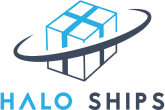Navigating customs clearance can be a complex and often frustrating process, but it’s a crucial step in international trade. Delays at customs can lead to increased costs, missed deadlines, and dissatisfied customers. To ensure smooth and efficient customs clearance, it’s essential to understand the process and take proactive measures.
1. Accurate and Complete Documentation:
Commercial Invoice:
This document is the cornerstone of customs clearance. It must include detailed information about the goods, including:
- Accurate description of the goods.
- Quantity and weight of the goods.
- Value of the goods in the currency of the transaction.
- HS codes for each item.
- Names and addresses of the buyer and seller.
- Terms of sale (Incoterms).
Ensure the information on the invoice matches the information on other documents.
Packing List:
This document provides a detailed inventory of the shipment, including:
- Number of packages.
- Contents of each package.
- Weight and dimensions of each package.
- Markings and numbers on the packages.
This document helps customs officials verify the contents of the shipment.
Bill of Lading (for sea freight) or Air Waybill (for air freight):
These documents serve as a contract of carriage between the shipper and the carrier and provide proof of shipment.
Certificate of Origin:
This document certifies the country where the goods were produced. It may be required to claim preferential duty rates under free trade agreements.
Import License or Permit:
Certain goods may require import licenses or permits, depending on the destination country and the nature of the goods.
Other Required Documents:
Depending on the specific goods and destination country, other documents may be required, such as health certificates, safety certificates, or inspection reports.
2. Accurate Harmonized System (HS) Codes:
Proper Classification:
The HS code is a standardized international system for classifying traded products. Accurate HS codes are essential for determining the correct duty rates and avoiding delays.
Research and Verification:
- Thoroughly research and verify the correct HS codes for your goods.
- Use official government customs websites or resources from the World Customs Organization (WCO).
- Consult with a customs broker or freight forwarder for assistance.
Detailed Product Descriptions:
Provide detailed product descriptions that accurately reflect the nature and composition of the goods.
3. Compliance with Customs Regulations:
Stay Updated:
Customs regulations are constantly evolving. Stay informed about the latest regulations and requirements of the destination country.
Restricted and Prohibited Goods:
- Be aware of any restricted or prohibited goods in the destination country.
- Ensure your goods comply with all applicable regulations.
Labeling and Marking Requirements:
Comply with all labeling and marking requirements, including country of origin labeling.
Intellectual Property Rights:
Respect intellectual property rights and avoid importing counterfeit goods.
4. Proactive Communication and Planning:
Advance Notification:
Provide advance notification to the customs authorities about your shipment.
Pre-Clearance:
Consider pre-clearance options, which allow you to submit documents and obtain customs clearance before the goods arrive.
Communication with Customs Brokers and Freight Forwarders:
- Maintain open communication with your customs broker and freight forwarder.
- Provide them with all necessary information and documents in a timely manner.
Contingency Planning:
Develop contingency plans to address potential customs delays.
5. Utilizing Technology and Automation:
Electronic Data Interchange (EDI):
Use EDI to transmit customs documents electronically, speeding up the clearance process.
Automated Customs Clearance Systems:
Take advantage of automated customs clearance systems offered by customs authorities or logistics providers.
Tracking and Visibility:
Utilize real-time tracking and visibility tools to monitor the status of your shipments and identify potential delays.
Online Platforms:
Platforms that help with customs documentation, and duty/tax calculations can greatly simplify the process.
6. Choosing the Right Partners:
Experienced Customs Brokers:
- Partner with experienced customs brokers who have expertise in the destination country’s regulations.
- They can provide valuable guidance and assistance with customs clearance.
Reliable Freight Forwarders:
Choose reliable freight forwarders who have a strong network and experience in handling international shipments.
7. Payment of Duties and Taxes:
Accurate Calculation:
Ensure accurate calculation of duties and taxes.
Timely Payment:
Arrange for timely payment of duties and taxes to avoid delays.
Payment Methods:
Understand the acceptable payment methods in the destination country.
8. Inspections and Examinations:
Be Prepared:
Be prepared for customs inspections and examinations.
Provide Assistance:
Provide assistance to customs officials during inspections.
Address Discrepancies:
Address any discrepancies or issues promptly.
9. Maintaining Records:
Record Keeping:
- Maintain accurate and complete records of all customs transactions.
- This will help you comply with record-keeping requirements and resolve any future disputes.
10. Understanding Incoterms:
Knowing which version of incoterms are being used, and what each term entails is very important. This will dictate who is responsible for each step of the shipping process, and who will be paying for what.
By following these tips, you can significantly reduce the risk of customs delays and ensure smooth and efficient clearance of your shipments.


